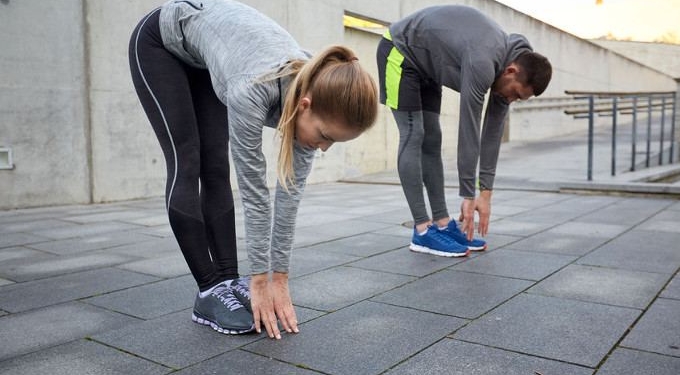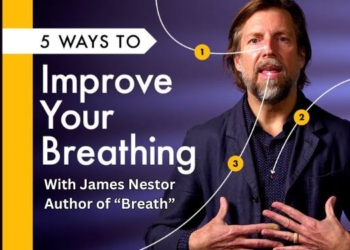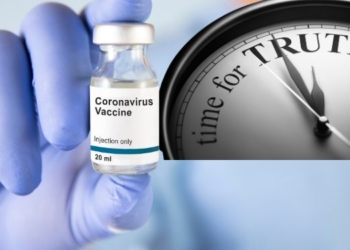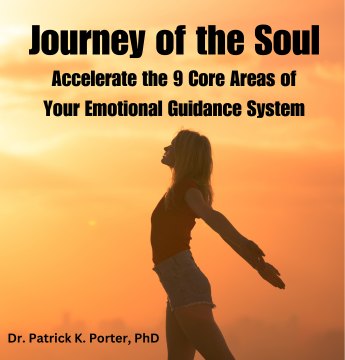
By Dr. Joseph Mercola | mercola.com
STORY AT-A-GLANCE
- The bulk of the scientific evidence does not support the recommendation to stretch before exercising to prevent injury
- Most injuries occur during eccentric contraction within normal range of motion. Therefore, increasing your range of motion before exercise is unlikely to prevent injury
- Stretching appears to increase pain tolerance, which could encourage injury. The benefit seen in studies that support stretching before exercise as a way to avoid injury appears to be due to the warmup sequence, not the stretching
- The purpose of the warmup is to increase circulation and blood flow to your muscles, and there are many simple ways to do this. Aerobic exercises such as squats, jumping jacks, cycling and even walking are examples
- As with stretching before exercise, it turns out it’s not the stretching after exercise that is the most useful if you’re looking to prevent pain and injury. A more beneficial option is active recovery or active cool-down, such as light weightlifting, mild yoga, cycling, walking, rowing or swimming
Most would probably agree that stretching is an important part of a well-balanced fitness routine, but exactly when should you stretch? Before or after your workout? Both? Neither? To tease out the pros and cons, let’s take a look at what the fitness literature has to say about these options.
Stretching Before Exercise
If you’re like most, you’re probably convinced that stretching before exercise is important for the prevention of injury. Would it surprise you to learn that the scientific evidence does not support this theory?
The confusion appears to have arisen as a result of the type of studies and evidence used as a basis for this recommendation. As explained in the editorial,1 “Stretching Before Exercise: An Evidence-Based Approach,” published in the British Journal of Sports Medicine in 2000:2
“Clinicians are under increasing pressure to … practice evidence based medicine. Although some authors argue that only research from human randomized clinical trials (RCTs) should be used to determine clinical management, an alternative is to consider the study design (RCT, cohort, basic science, etc) as one of many variables, and that no evidence should be discarded a priori.
In other words, the careful interpretation of all evidence is, and has always been, the real art of medicine. This editorial explores these concepts using the sport medicine example of promoting stretching before exercise to prevent injury.
In summary, a previous critical review of both clinical and basic science literature suggested that such stretching would not prevent injury. This conclusion was subsequently supported by a large RCT published five months later. Had the review relied only on previous RCT data, or even RCT and cohort data, the conclusions would likely have been the opposite, and incorrect.”
The paper goes on to list a number of observations that refute the idea that stretching before exercise makes you less prone to injury, including the following:
- Most injuries occur during eccentric contraction within normal range of motion; therefore, increasing your range of motion before exercise is unlikely to prevent injury
- Even mild stretching can cause damage at the cytoskeletal level
- Stretching appears to increase pain tolerance, which could encourage injury
As noted in the paper, “It does not seem prudent to decrease one’s tolerance to pain, possibly create some damage at the cytoskeletal level and then exercise this damaged anesthetized muscle. Of note, there is no basic science evidence to suggest that stretching would decrease injuries.”
No Useful Benefit of Stretching Before Exercise
Later reviews seem to support what the featured editorial is saying. For example, a 2002 systematic review3 in the BMJ, which included five studies that assessed the effects of stretching before and after exercising on post-exercise muscle soreness, concluded that “Stretching produced small and statistically nonsignificant reductions in muscle soreness” after a bout of exercise.
This finding applied whether the stretching was done before or after exercise. Data from two army studies included in this BMJ review also showed stretching before exercise failed to reduce the risk of injury.
Another review paper,4 published in the Journal of Athletic Training in 2005, also analyzed data from studies using military recruits, concluding that “the combined risk reduction of 5% indicates that the stretching protocols used in these studies do not meaningfully reduce lower extremity injury risk …”
Warmup, Not Stretching, Is the Key to Injury Prevention
All of that said, the British Journal of Sports Medicine paper5 points out there is evidence to suggest that warming up your muscles before exercise will help prevent injuries — but that’s not the same as stretching.
This, in fact, appears to be part of what has caused the confusing contradictions in the evidence in the first place, the paper notes, as RCT studies that support stretching before exercise all included some sort of warmup intervention.6 In other words, the benefit seen in those studies was likely due to the warmup sequence, not the stretching.
So, how do you warm up your muscles before exercise? Importantly, the purpose of the warmup is to increase circulation and blood flow to your muscles, and there are many simple ways to do this.
Aerobic exercises such as squats, jumping jacks, cycling and even walking are examples. Simply do them for a few minutes until you're breathing heavily. You can learn more about this in “Warmups and Cool-Downs — What Works and What Doesn’t.”
Aside from lowering your risk of injury, warming up before exercising has also been shown to prevent delayed onset muscle soreness (DOMS),7 which is a common complaint after intense exercise.
Stretching After Exercise
So, what does the evidence say about stretching after you’ve finished your workout? As noted earlier, the 2002 BMJ review8 found no benefit of stretching either before or after exercise, in terms of preventing muscle soreness or injury.
Ditto for the 2005 paper9 looking at military recruits, published in the Journal of Athletic Training. The recommendation to stretch after exercise is not so much about preventing injury or soreness, though. Typically, this recommendation is based on the idea that it will help improve your flexibility.
Strangely enough, the evidence for that is by no means incontrovertible. As noted in a 2007 study10 published in the Journal of Strength and Conditioning Research, static stretching of the quadriceps, hamstrings and calf muscles after exercise, with each stretch held for 15 seconds, resulted in no significant improvement in flexibility measurements.
Only hip flexibility “approached significance and therefore favored stretching after the workout,” the authors state. Aside from that, “The placement of stretching, before or after a workout, does not make a difference in its effect on flexibility.”
It should be noted, however, that this particular study was very short-term in its scope. Volunteers only performed the exercises twice, 48 to 72 hours apart. Clearly, stretching will, over time, improve your flexibility. The timing of it, though, may not have a significant bearing on your results.
As just one example, a study11 in The Journal of Sports Medicine and Physical Fitness enrolled female seniors in a 10-week flexibility training program to see if spinal mobility can be improved in the elderly.
The women participated in flexibility training 20 to 30 minutes three times a week. The control group participated in an alternative program that included walking, swimming, and dancing. As reported by the authors:
“At the conclusion of the 10-week period, all subjects were retested for spinal mobility, using back flexion and extension measures. Results indicated a significant improvement in spinal mobility in the experimental group, and virtually no measurable change in the control group.
This study suggests that specialized training in back flexibility for older adults is warranted, and that significant gains in spinal mobility can be obtained, regardless of age.”
Active Recovery, Not Stretching Is Best After Exercise
So, as with stretching before exercise, it turns out it’s not the stretching after exercise that is the most useful if you’re looking to prevent pain and injury. A more beneficial option is active recovery or active cool-down.
What is active recovery, you ask? It’s basically very similar to the warmup — low-intensity exercise.12 In other words, you’ll want to slowly “wind down” after your workout. Rather than abruptly quitting and going to rest, you continue exercising at a much lower intensity for a few minutes.
Benefits of active recovery or cool-down include reduction of lactic acid buildup in your muscles, which will help minimize post-exercise stiffness and pain, and the promotion of blood flow to heavily taxed muscles, which will help counteract inflammation and improve healing.13
Examples of active recovery or cool-down activities include light weightlifting, mild yoga, cycling, walking, rowing or swimming. Using a foam roller can also be beneficial at this stage, as it will help improve flexibility and ease pain by increasing blood flow through your fascia and muscles.
Massage is another recovery technique supported by science. A 2018 systematic review14 that looked at a variety of post-exercise recovery strategies, including active recovery, massage, compression garments, contrast water therapy, and cryotherapy, concluded: “Massage was … the most powerful technique for recovering from DOMS and fatigue.”
Even here, though, the evidence is split and not entirely conclusive. As noted in a review15 published in the journal Sports Medicine in 2018:
“It is widely believed that an active cool-down is more effective for promoting post-exercise recovery than a passive cool-down involving no activity. However, research on this topic has never been synthesized and it therefore remains largely unknown whether this belief is correct.
This review compares the effects of various types of active cool-downs with passive cool-downs on sports performance, injuries, long-term adaptive responses, and psychophysiological markers of post-exercise recovery.
An active cool-down is largely ineffective with respect to enhancing same-day and next-day(s) sports performance, but some beneficial effects on next-day(s) performance have been reported.
Active cool-downs do not appear to prevent injuries, and preliminary evidence suggests that performing an active cool-down on a regular basis does not attenuate the long-term adaptive response … Performing active cool-downs may partially prevent immune system depression and promote faster recovery of the cardiovascular and respiratory systems …
Most evidence indicates that active cool-downs do not significantly reduce muscle soreness, or improve the recovery of indirect markers of muscle damage, neuromuscular contractile properties, musculotendinous stiffness, range of motion, systemic hormonal concentrations, or measures of psychological recovery …
In summary, based on the empirical evidence currently available, active cool-downs are largely ineffective for improving most psychophysiological markers of post-exercise recovery, but may nevertheless offer some benefits compared with a passive cool-down.”
To Ice or Not to Ice
Interestingly, while ice water immersion or cryotherapy is commonly recommended as a form of active recovery after exercise, there’s evidence to suggest it can actually promote muscle soreness the day after exercise rather than limit it.
Two case histories of athletes being treated for DOMS after using ice water immersion after their workouts were presented in a 2010 issue of the Journal of Emergencies, Trauma, and Shock.16 While there are indeed many benefits of cryotherapy or ice water immersion, there are also drawbacks. Some of the ones listed in this 2010 paper include:
•Cooling attenuates temperature-dependent processes such as myofiber regeneration, muscle hypertrophy, and improved blood flow, and may, therefore, counteract training benefits.
•Some studies have shown ice water immersion is ineffective when it comes to minimizing markers of DOMS.
•Other studies have shown ice water immersion “manifests significant physiological effects that can impair subsequent cycling performance (maximum power decline 13.7% versus 4.7%, maximum heart rate decreased by 8.1% versus 2.4% compared with the respective control groups),” the paper says.
It also cites a second study showing ice water immersion after treadmill exercise decreased the subjects isometric handgrip strength, compared to those who did not use the immersion therapy.
In conclusion, the authors state that:17
“Training and competition creates an overload to stress the body, which in turn produces fatigue followed later by improved performance. What athletes do after their exercise and work-out regime can affect their muscle recovery … and sports performance. It is thus important to have an after-exercise recovery plan. Some recommendations include:
•Sufficient rest to allow for natural recovery to occur
•Gentle stretching …
•A necessary cool-down period versus stopping immediately and abruptly
•A properly balanced diet
•Adequate fluid replacement
•Proper massage
This list is sometimes followed by alternate hot and cold baths or shower and contrast water therapy. As there is still a lack of evidence with these therapies, further research will be required to investigate the different hot to cold time ratios, the appropriate mode of contrast treatment and the duration and the optimum water temperature needs to be examined to closely verify its effectiveness as a recovery modality.
A holistic approach to recovery will give a better response rather than an isolated recovery technique.”
Summary Recommendations
As you can see, few hard and fast recommendations can be made when it comes to exercise and its pre- and post activities. As a general rule, however, it seems generally accepted that a quick warmup period is advisable before you start your workout. Stretching before working out is unlikely to provide you with any significant protection from injury though.
Afterward, using active recovery or active cool-down techniques are likely to be your best bet. At the very least, it’s better than an inactive cool-down where you abruptly stop.
Stretching after your workout may not protect you from pain or injury, either, but long-term, stretching is an important part of a well-rounded fitness program and will improve your flexibility and thus mobility over time, so it should not be discounted entirely.
When stretching, I believe dynamic, functional and active isolated stretching (AIS)18 are best. AIS uses gentle pressure, holding each stretch for just two seconds to work with your body's natural physiological makeup to improve circulation and increase elasticity.
I typically recommend avoiding static stretching, as it reduces blood flow in the tissue and creates localized ischemia and lactic acid buildup, which is what you want to avoid.19 I also do not recommend ballistic stretching, as the uncontrolled movement increases your risk of muscle tears.20
Since stretching should be done after a warmup, doing your stretches after a workout is probably a good idea, since you’re already warmed up. Just be sure not to overstretch. Your body has physical limitations and when pushed too far, you can cause microtears in the muscles, tendons, and ligaments21 without improving your flexibility.
Lastly, using ice therapy will increase your metabolic rate and has a beneficial impact on your mitochondria. It may also counteract inflammation, and many athletes use it as part of their active recovery.
I think the concluding statement in the 2010 issue of the Journal of Emergencies, Trauma, and Shock22 sums it up quite nicely: Your best bet is to use a holistic approach to recovery rather than focusing on any one specific recovery technique.
In some instances, cold immersion may be appropriate, in others, maybe not so much. One instance in which ice therapy is best avoided is after strength training. The reason for this is because strength training he oxidative stress generates reactive oxygen species that actually help increase muscle mass.
If you expose yourself to cold within the first hour after strength training, you suppress that beneficial process, so avoid doing cold immersion (such as a really cold shower or ice bath) immediately after a resistance workout.
















